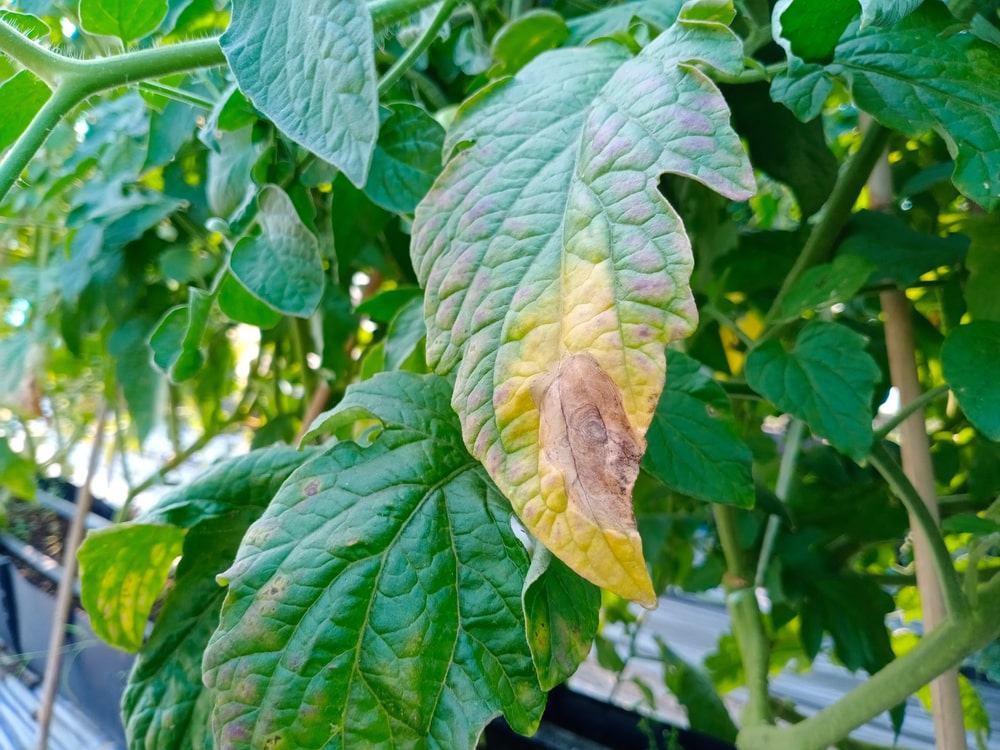
Growing plants are one of the people’s favorite hobbies around the whole world! The green color of the plants uplifts the mood and reminds you about the beauty of nature. However, plants also come with some diseases, blight being one of them. Blight is a plant disease that attacks the leaves of the plants making them weaker, ultimately leading to death. Some people often tend to ask about the difference between early blight and late blight. Therefore, we are here to provide you with compassion between the two types of blights. Here is everything to know!
Early Blight vs Late Blight
Early Blight
Early blight starts showing its symptoms when small lesions start appearing in the leaves of the plant. These lesions begin to grow with the passage of time. After some time, they grow in shape with dead tissues in the center. They seem to look dry even if you provide them with the ideal amount of water. The area around the dead plant tissues starts to become weak. It changes its color from yellow to brown. Also, the area starts bending downwards as it cannot hold the pressure anymore and the leaves in that area die and fall off the plant body. Instead of affecting the fruit directly, it affects the area surrounding it. Unlike late blight, early blight has the ability to come back repeatedly next season. This is because they have the ability to survive the winters.
Early blight attacks on the old leaves first as they are easily available. Only the discoloration at the center of the leave can be seen. Also, early blight spreads slowly as compared to late blight. This means that there are more chances to save a plant with early blight than with late blight.
To treat the disease, it is recommended to remove the old leaves and transport the plant to a new location for the next year.
Late Blight
Late blight is capable of affecting the plant at any place it desires. Late blights can affect the fruits as well as the area surrounding them. In this type of blight, the leaves of the plant start to darken in color. This causes huge damage to the plant tissues. The disease slowly starts spreading towards the stem. Late blight thrives in humid and moist conditions. if you water your plant more than required or if there is no proper drainage system for the plant water, then it is more likely that your plant will be suffering from late blight. However, if the disease is treated properly, the fruits can be saved. Also, it is worth mentioning the fact that, unlike early blight, the late blight is not capable of surviving the winters.
However, late blight is considered to be more dangerous than early blight. This is because it can attack the fruits while early blight does not attack the fruit. Also, the disease spreads more quickly than the early blight which means that your plant may be destroyed completely by the time, you find out about the disease. Unlike early blight, the late blight attacks on the new and young leaves first. You can easily see mold formation on the leaves when the plant is suffering from late blight whereas, in early blight, no mold appearance occurs. High humidity causes the diseases to spread more quickly causing the plant to die faster. Also, the fruits have dark reddish-colored spots that indicate that the fruit has been affected with late blight.
To treat the disease, it is suggested to destroy the plant completely. Also, discard the fruits of the diseases plant as they may also contain the disease. Be sure to plant in a new location for the next year.
The Bottom Line
Early blight and late blight are the two types of blight that are often confused with each other. However, as deadly as both the diseases are, it is quite important to not mistake one disease for the other. This is why we highly recommend you read about both these diseases in detail.
